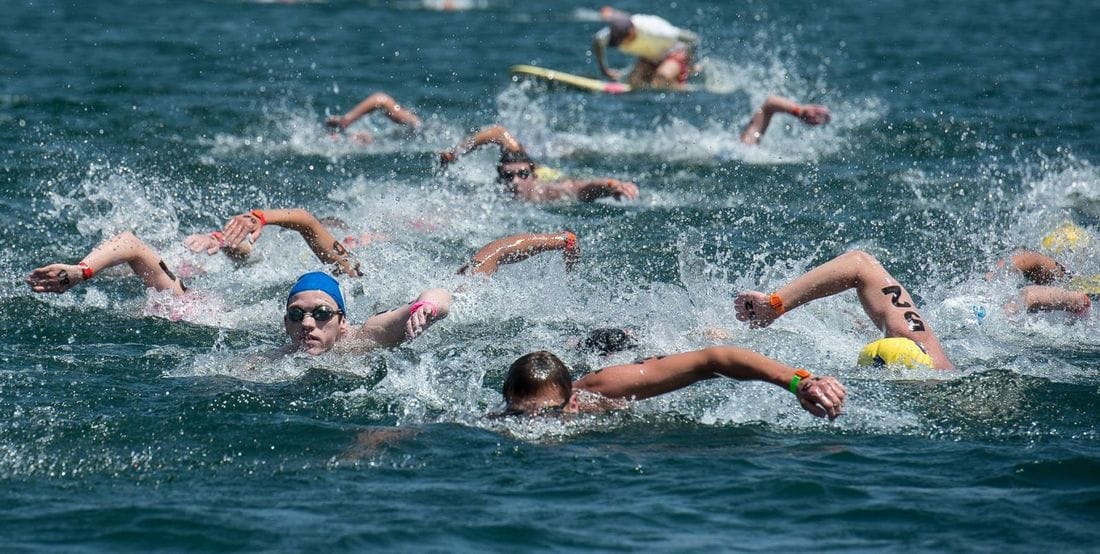But, why is addressing the 1-2% of the completely bunk notion of Marginal Gains more important than first addressing the other 98-99%? By focusing on the 1-2% -- the tiny, tactical details – we end up largely ignoring the strategic foundation of the 98-99%. Think of building a house. The structure itself can be constructed of all the latest-and-greatest materials and have all the modern efficiencies possible. But, if that house is built without a foundation, then it will fall apart like a house of cards at the first strong wind or storm. Putting together a sound training plan is no different. Without first establishing a strategic and sound foundation, the possible gains you could receive from addressing Marginal Gains is a useless exercise. For example, if you’re not sleeping enough (foundational), then no superfood or magical supplement is going to provide you with more energy or better performances.
And, here’s another dose of reality. For the vast majority of endurance athletes, the Marginal Gains are immaterial. They don’t matter at all. Unless you are already at the top of the athletic pyramid where 0.5-1% is all that stands between winning and finishing off the podium, then obsessing over the minutia does us little to no good. Rather than spend $1,000 or more on the fastest, most cutting edge wetsuit to shave time off your triathlon swim, instead work on your stroke technique to gain efficiency and log more time in the pool to increase your endurance. Because then the $300 wetsuit will serve you just fine (really, it will). For the same type of analysis on the bike, you can read another article I wrote on the Cost v Benefit of Aero Equipment. Even with running, where the cost outlay is straightforward and less costly than either swimming or cycling, the premise is identical. Do we really need that super space age $150+ pair of shoes to prevent injury or to run longer and faster?
It's time for a dose of reality. It’s time for endurance athletes to shift their focus to the structural foundation of what they do – to the 98-99%. Unless you can unequivocally say your foundation is as strong as bedrock, then forget about Marginal Gains. The more solid your foundation, the more you will be able to build upon it.
The biggest challenge is that we exist in a world of immediate gratification. The gadgets and the hacks and the super secrets of the pros are very attractive because they provide us with the promise of shortcuts. Why train multiple sessions a day and put in many hours of dedicated work every week if instead we are promised the same results in less than half the time? Where the argument of the quick fix falls down is that it assumes or even portends that innovation and creativity occur in the absence of a basic foundation, when in fact it is precisely that foundation which unlocks the power of the innovation. The foundation is prior or existing knowledge; the innovation is a potential iteration of that foundational knowledge. See what I mean?
If your diet is terrible, then the best supplement in the world will only start to make up for the holes in your diet plan. It sure won’t boost your performance. If you heel strike and hunch over like Quasimodo when you run, better to work on your form before you invest in expensive shoes. If you ride an ill-fitting bike, then you must first address your position before you slap on a set of $2,000 race wheels. Yet, we are programmed to do the complete opposite. We look for improvements in all the wrong places. Because the investment of money is so much easier to rationalize than the investment of time.
The focus on the final 1-2% has created quite a problem. There are only so many final touches – legit and mythical – which we can perform before we very quickly reach our limit. And therein lies the irony. The Marginal Gains, by definition, account for very, very little. The returns on those gains are so small and are maxed out very quickly. Yet, what happens when we hit the ceiling? We exacerbate the problem by searching for the next Marginal Gain, the next magic pill, the next hack (oh, that word).
To be clear, nearly all endurance athletes are not at a point in their progression where worrying about the 1-2% makes any sense. You must first master your craft before you focus on becoming the best-of-the-best. It is in that pursuit of ultimate excellence when focusing on the minutia will yield measurable return. Understand the basics and why they are important. Nail them. Come back to them frequently, even as you iterate on your training plan one year to the next. That’s the path to real success for just about anyone but the elite of the elite.
And that path is very simple to both find and follow – sleep more; eat whole, real food; train consistently and tick all the energy system boxes. The problem is that the best advice isn’t sexy. It’s not sleek and shiny and full of buzzwords. So, it doesn’t sell.
Which is unfortunate.
Happy Training,
Coach Nate



 RSS Feed
RSS Feed